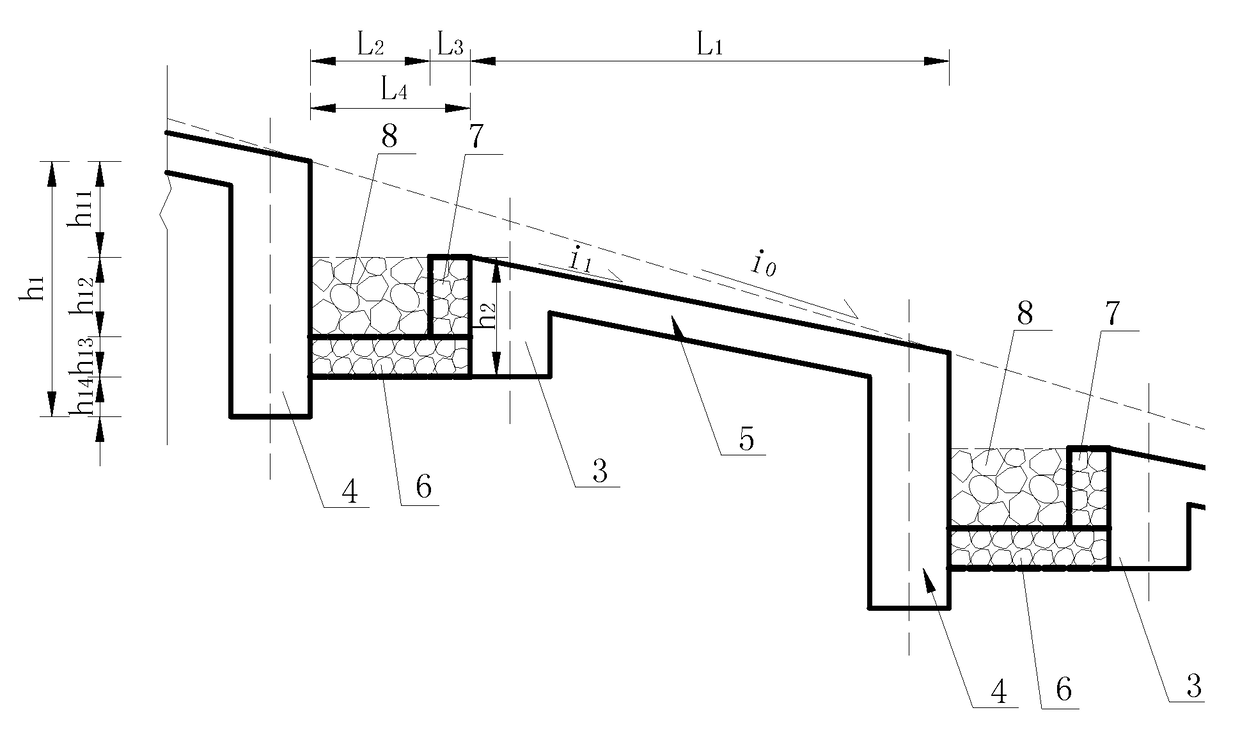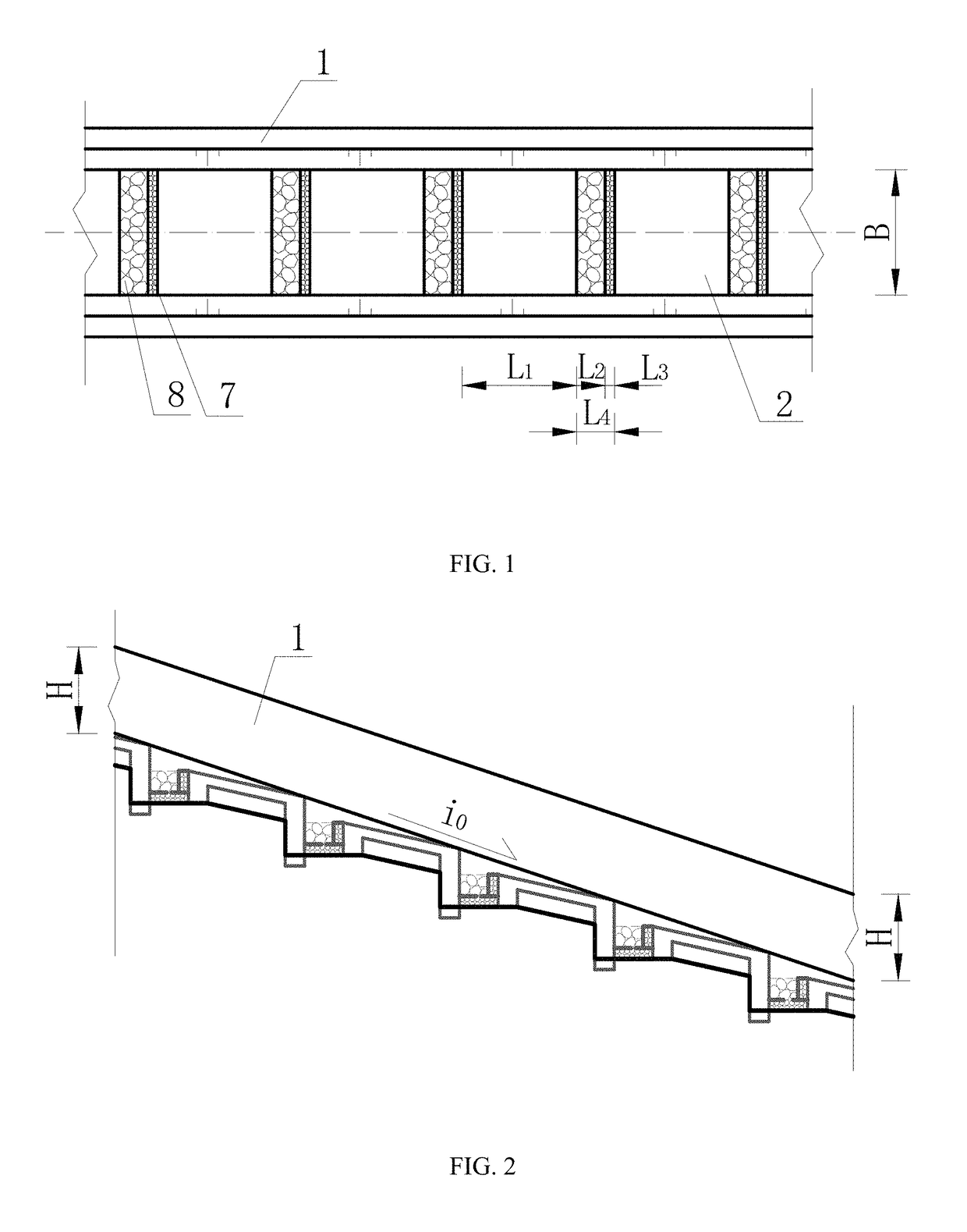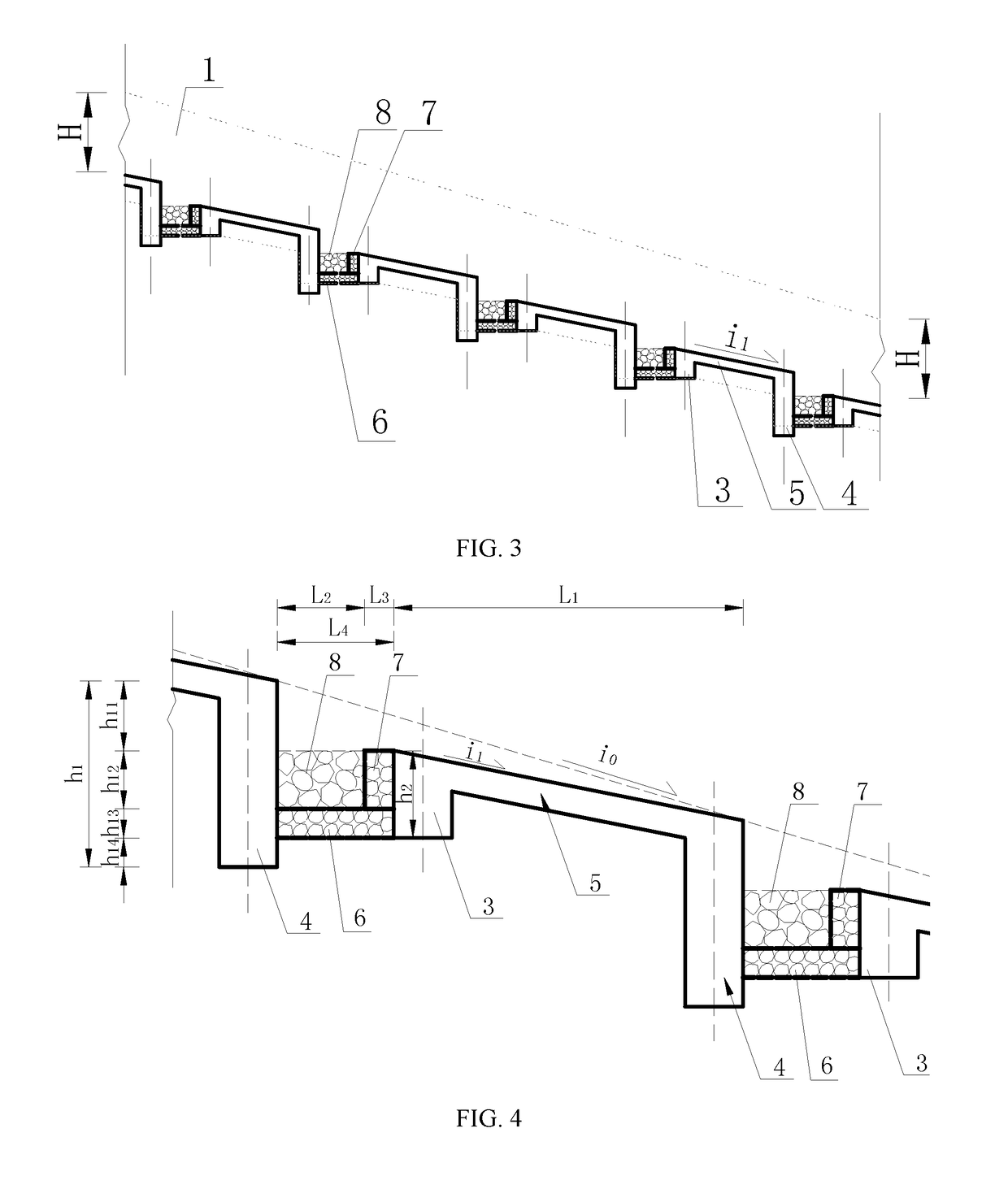Debris flow drainage channel with step pool structure and its applications
a technology of step pool and drainage channel, which is applied in the direction of artificial water canals, marine site engineering, and dykes, etc., can solve the problems of increasing the maintenance cost of the operating period, reducing the service life of the drainage channel, and absorbing the debris flow intensely, so as to reduce the cost of later-stage maintenance, reduce the service life of the drainage channel, and regulate the flow velocity of the debris flow
- Summary
- Abstract
- Description
- Claims
- Application Information
AI Technical Summary
Benefits of technology
Problems solved by technology
Method used
Image
Examples
embodiment 1
[0023]As shown in FIG. 1, FIG. 2, FIG. 3, FIG. 4, FIG. 5 and FIG. 6, when the area of the drainage basin of some debris flow gully is 1.78 km2, to prevent debris flow disasters, one silt arrester is designed to be placed in the middle of the drainage basin, and a drainage channel with a length of 240 m is designed to be built on a deposition fan. For the drainage channel, the average gully bed longitudinal slope i0 of the channel bottom is 0.40, the flow rate of the drained debris flow is 96 m3 / s, and the density is 21.5 kN / m3, to control the intense abrasion and scouring actions of the debris flow, the debris flow drainage channel with a step-pool structure is adopted. The debris flow drainage channel with a step pool structure consists of a drainage channel bottom and drainage channel side walls (1) arranged on both sides of the drainage channel bottom, wherein the drainage channel bottom consists of multiple fully lined step sections. Two sections are arranged at a given interval...
embodiment 2
[0030]As shown in FIG. 1, FIG. 2, FIG. 3, FIG. 4, FIG. 5 and FIG. 6, when the area of the drainage basin of a given debris flow gully is 8.6 km2, to prevent debris flow disasters, three silt arresters are designed to be arranged in the middle of the drainage basin, and a drainage channel with a length of 480 m is designed to be built on a deposition fan. For the drainage channel, the average gully bed longitudinal slope i0 of the channel bottom is 0.20, the flow rate of the drained debris flow is 265 m3 / s, and the density is 15 kN / m3, to control the intense abrasion and scouring actions of the debris flow, and the debris flow drainage channel with a step pool structure is adopted. The debris flow drainage channel with a step pool structure consists of a drainage channel bottom and drainage channel side walls (1) arranged on both sides of the drainage channel bottom, wherein the drainage channel bottom consists of multiple fully lined step sections (2) arranged at a given interval an...
PUM
 Login to View More
Login to View More Abstract
Description
Claims
Application Information
 Login to View More
Login to View More - R&D
- Intellectual Property
- Life Sciences
- Materials
- Tech Scout
- Unparalleled Data Quality
- Higher Quality Content
- 60% Fewer Hallucinations
Browse by: Latest US Patents, China's latest patents, Technical Efficacy Thesaurus, Application Domain, Technology Topic, Popular Technical Reports.
© 2025 PatSnap. All rights reserved.Legal|Privacy policy|Modern Slavery Act Transparency Statement|Sitemap|About US| Contact US: help@patsnap.com



